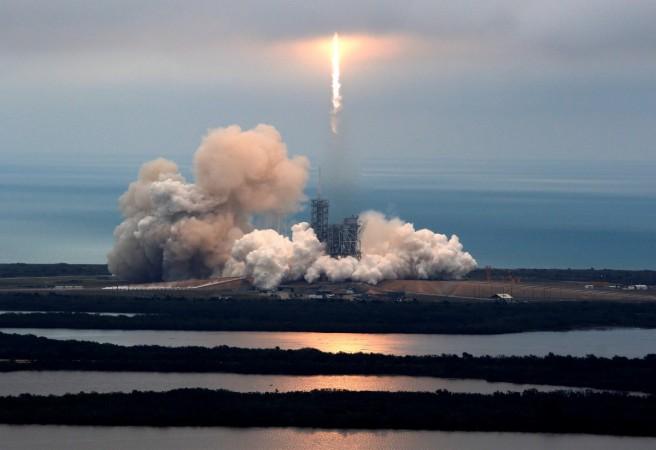
After a day's delay, SpaceX finally launched its CRS 10 mission, with its unmanned Dragon spacecraft, aboard the Falcon 9 rocket. The mission to the International Space Station (ISS) took place at 9:39am EST on Sunday, February 19 2017.
Also Read: NASA's Cassini spacecraft explores the salty ocean in Saturn's icy moon Enceladus
The landing of the Falcon 9's first stage was a success too; it took place some miles away from the launch site in Florida. This was the first daytime landing at Cape Canaveral Air Force Station, space.com reported.
"Baby came back," Musk posted on his Instagram after its landing.
The reason behind the delay was a technical issue identified by engineers before the launch on Saturday, February 18 2017.
A small leak was detected in the upper stage of the Falcon 9 rocket just 13 seconds prior to launch, techcrunch.com reported.
In September 2016, an explosion was observed on the launchpad, in order to prevent a similar event from taking place, Elon Musk, the SpaceX CEO chose to delay the mission by a day.
All systems go, except the movement trace of an upper stage engine steering hydraulic piston was slightly odd. Standing down to investigate.
— Elon Musk (@elonmusk) February 18, 2017
"It was 99% likely to be fine, but the 1% chance of something going wrong wasn't worth it," Musk said, as reported by Forbes.
The launch took place from Pad 39A of NASA's Kennedy Space Center, once used to send astronauts to Moon. The first launch made on this pad was Apollo 4 in 1967.
It was the first time a commercial mission has been launched from this pad.
"Liftoff of the Falcon 9 to the space station on the first commercial launch from Kennedy Space Center's historic Pad 39a!" said NASA commentator George Diller stated.
Around 5,500 pounds (2495 Kg) of cargo, supplies and research equipment were carried by the craft on the mission to replenish resources at the ISS.
Apart from replenishing supplies at the ISS, the mission also aims at conducting research on crystallising monoclonal antibodies, in order to understand their reaction in human bodies and cure ailments of the immune system.
The other experiment is on drug-resistant microbes, which could help researchers come up with ways to combat them.
"The equipment on board the Dragon includes aninstrument that will survey the Earth's upper atmosphere and is a continuation of one of NASA's longest-running Earth-observation programs. Called SAGE III for Stratospheric Aerosol and Gas Experiment, the instrument examines the levels of ozone, aerosols, nitrogen dioxide and water vapour in the stratosphere and troposphere high above Earth," a NASA statement said.









